
Delivering exceptional client service is fundamental to any successful business. It goes beyond meeting basic expectations and involves creating memorable experiences that foster loyalty and satisfaction. Here’s a detailed guide on how to offer the best client service possible, featuring ten essential strategies.
1. Start Using a Client Portal
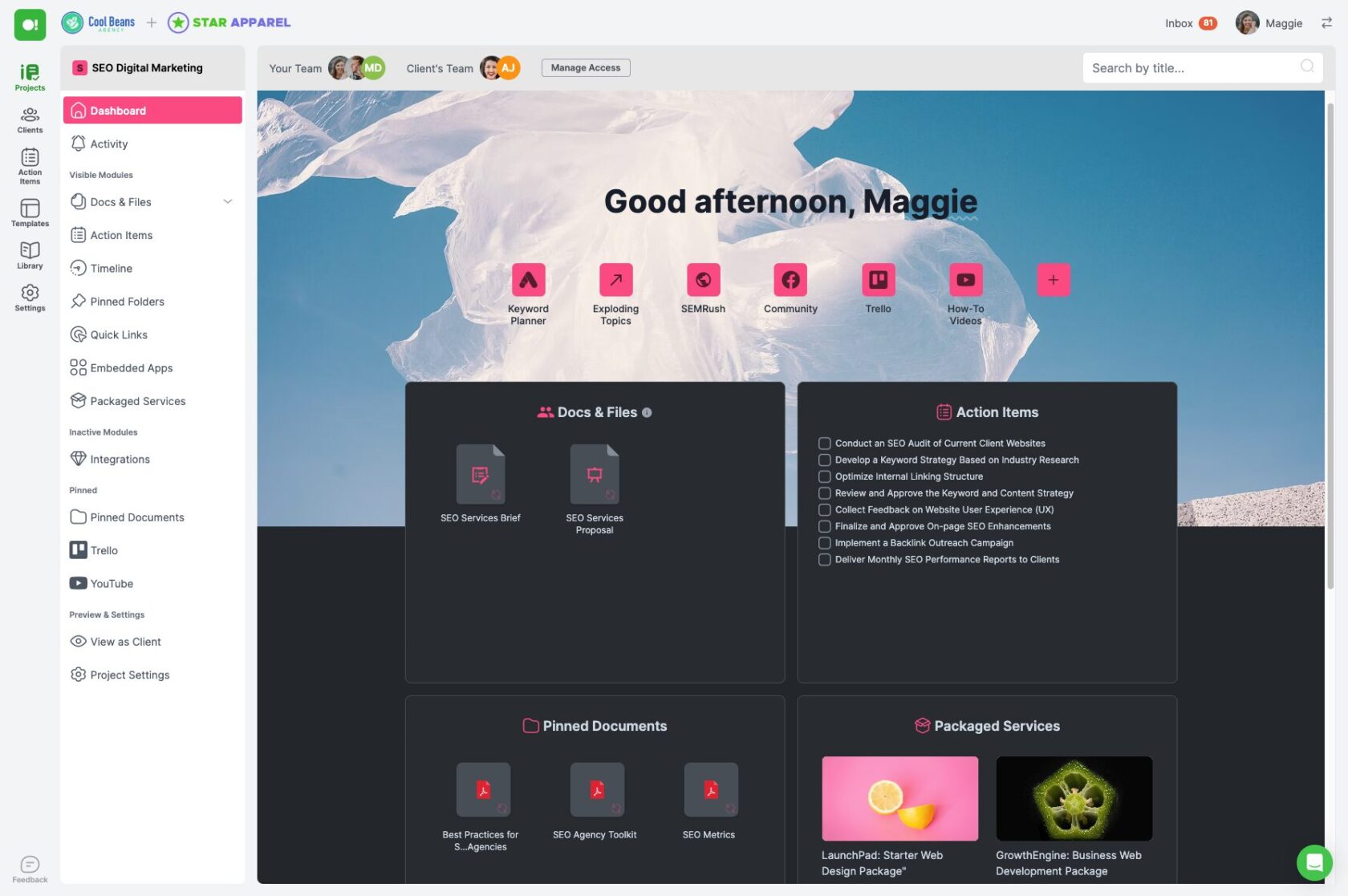
Implementing a client portal can transform your client service operations. A client portal like SuperOkay provides a centralized platform where clients can access information, track project progress, communicate with your team, and manage their accounts. This convenience and transparency significantly enhance the client experience, reducing misunderstandings and increasing satisfaction.
🔑 Key Features
• Simple User Interface: Clean, intuitive interface that is easy for clients to navigate
• Fully Customizable: Tailor the look and functionality of the portal to fit your brand and client needs
• Embedded Tools: Features integrations with other tools via “embeds”
• Storage: 1TB with Business Plan
💰 Pricing
Price: Starts at 9$/month (2GB to 1TB, depending on plan)
Free Tier: Yes (500MB)
🧐 Why SuperOkay?
SuperOkay is loved by its users for its exceptional usability and comprehensive feature set, making it a great choice for agencies looking for an easy to use yet powerful client portal.
What sets SuperOkay apart is its ability to combine ease of use with great functionality, making it a simple client portal that does not compromise on features.
Using SuperOkay’s client portal shows your commitment to providing a seamless, efficient service, setting you apart from competitors who rely on less efficient communication methods.
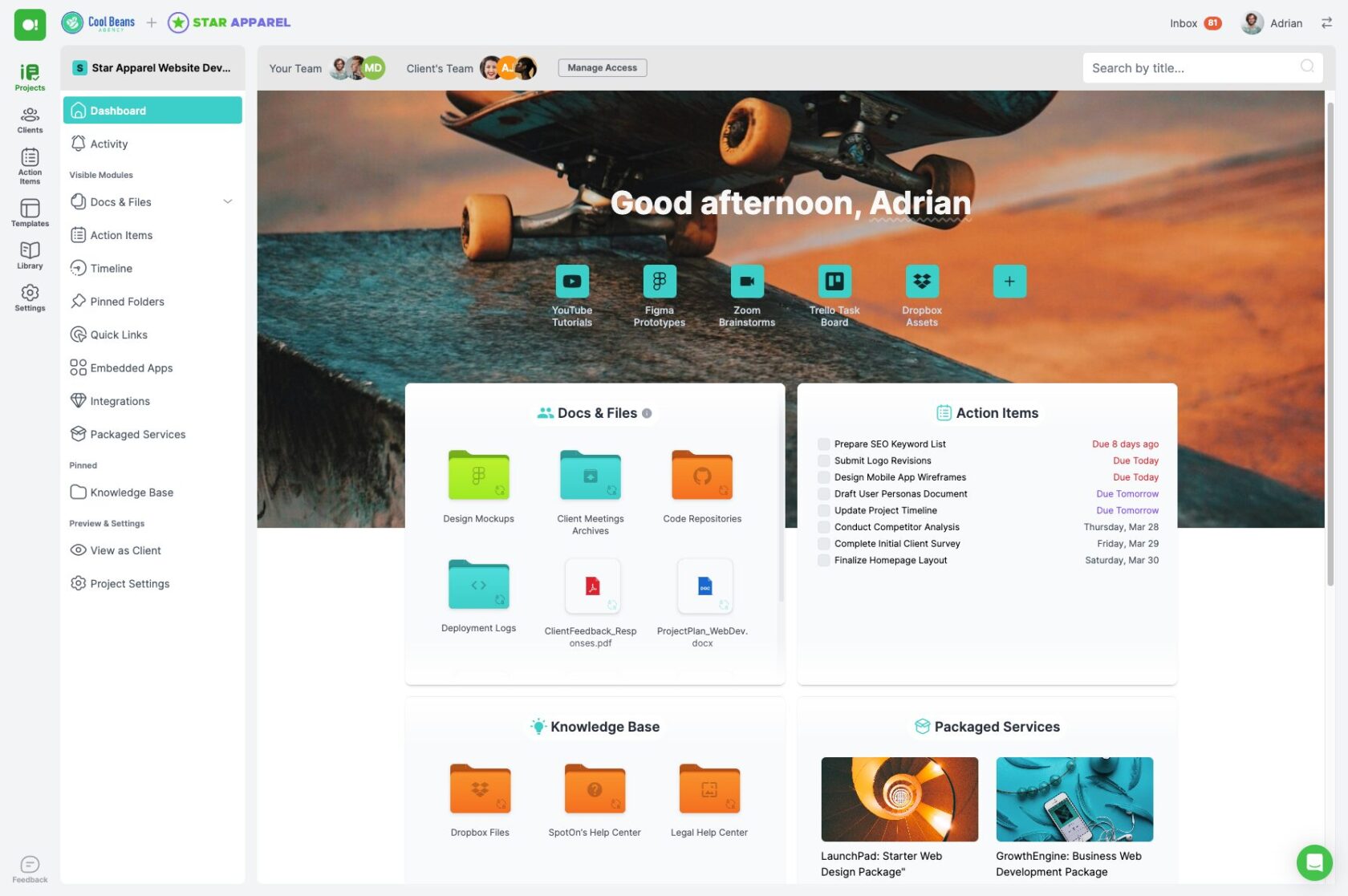
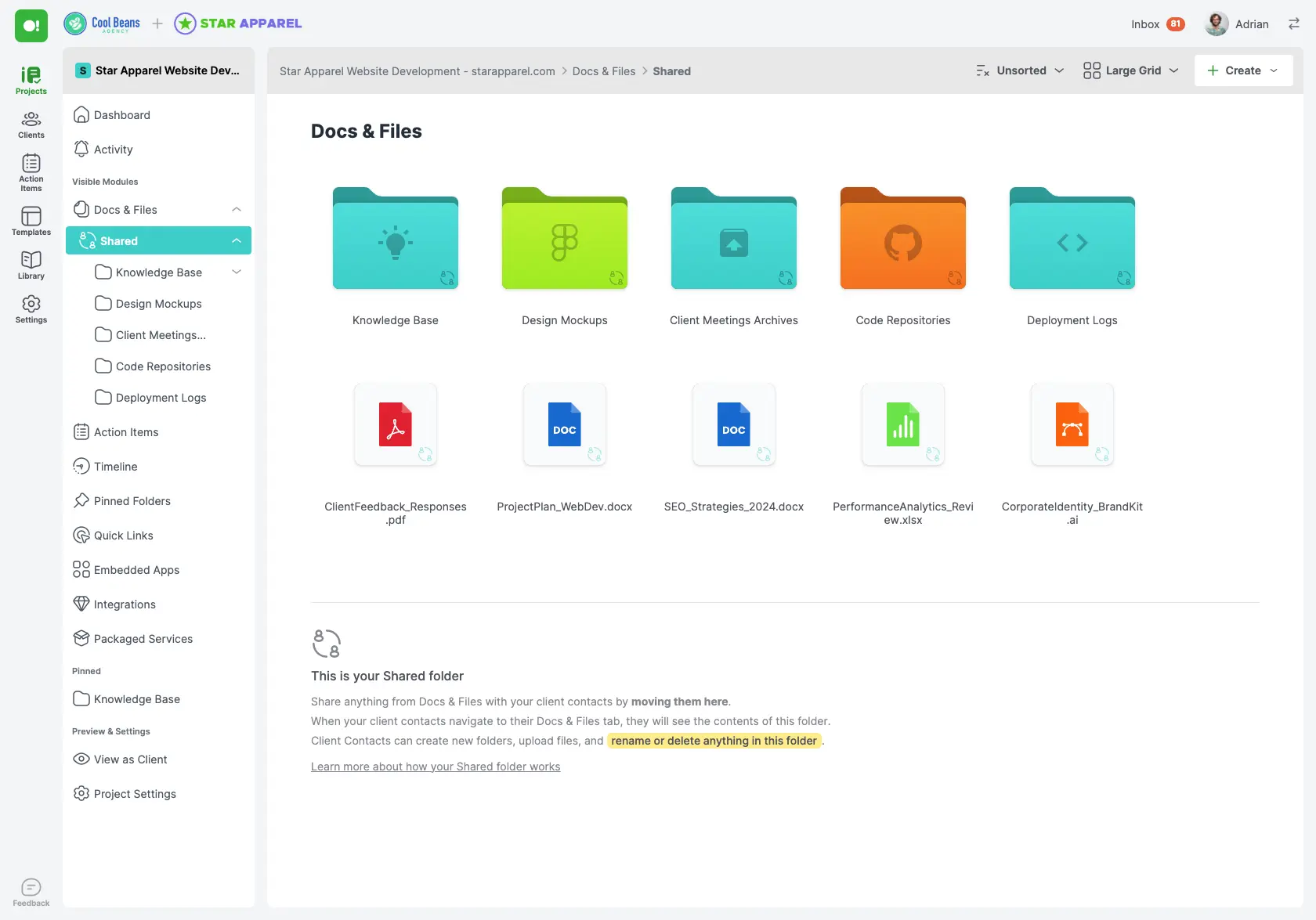
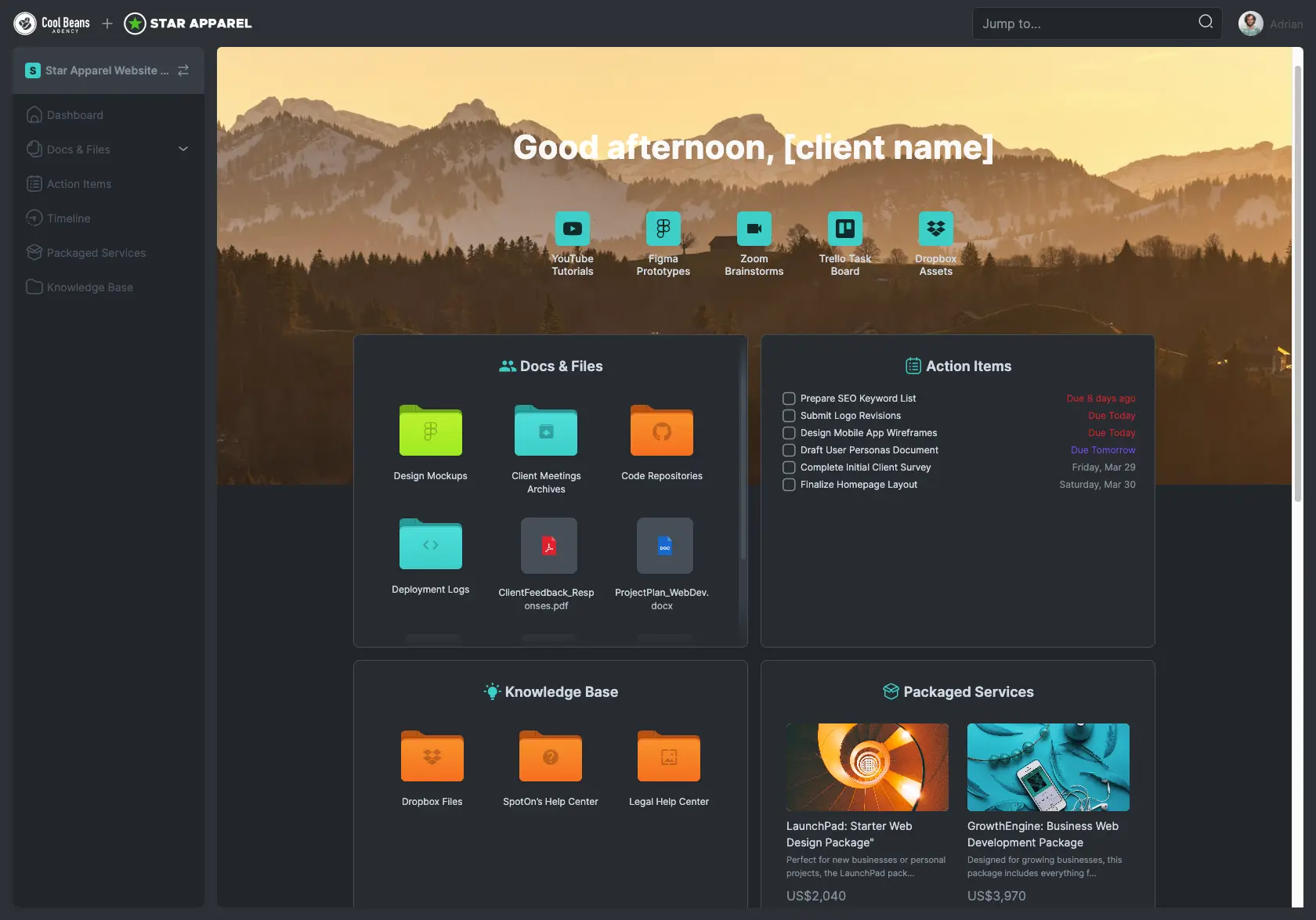
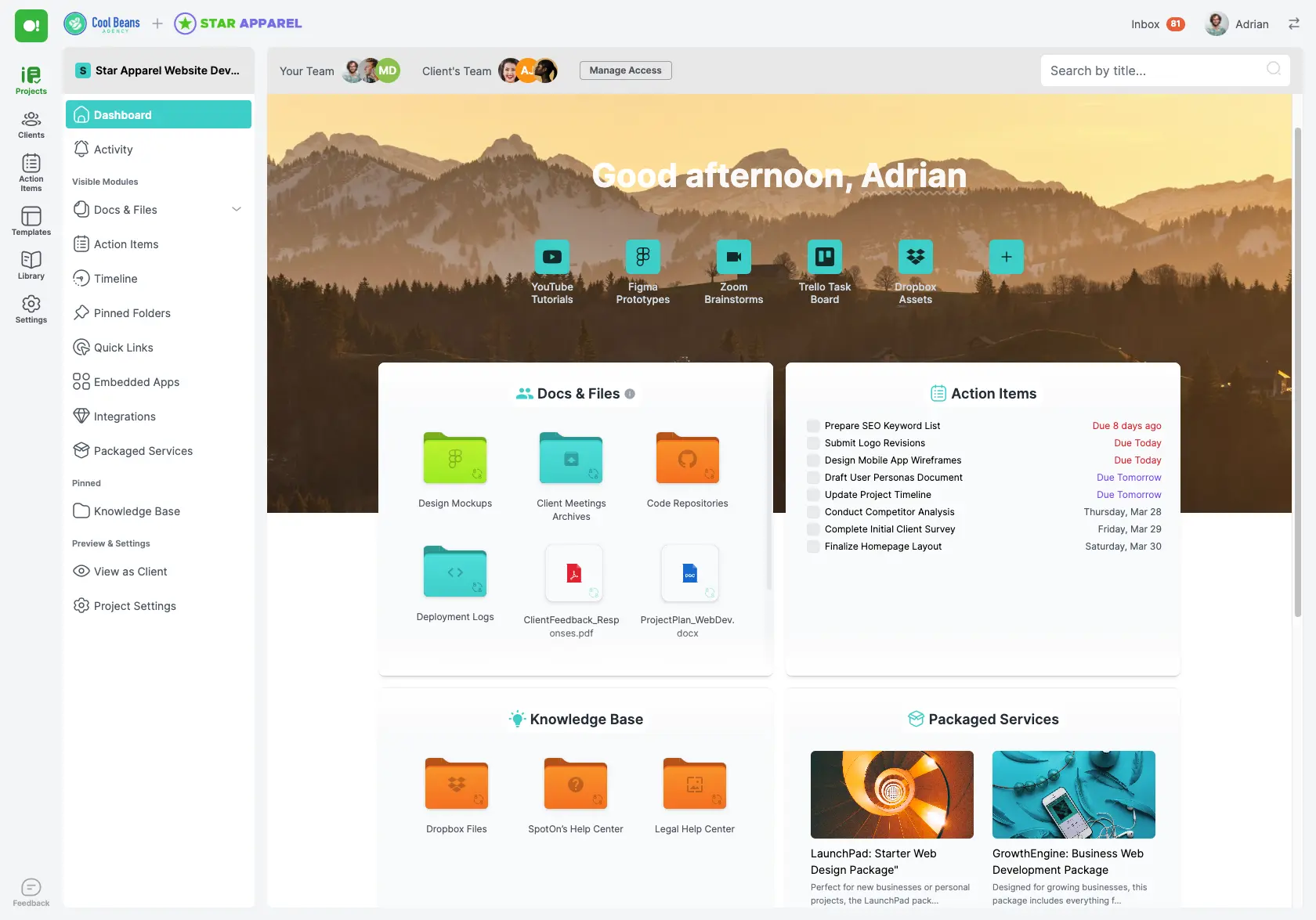
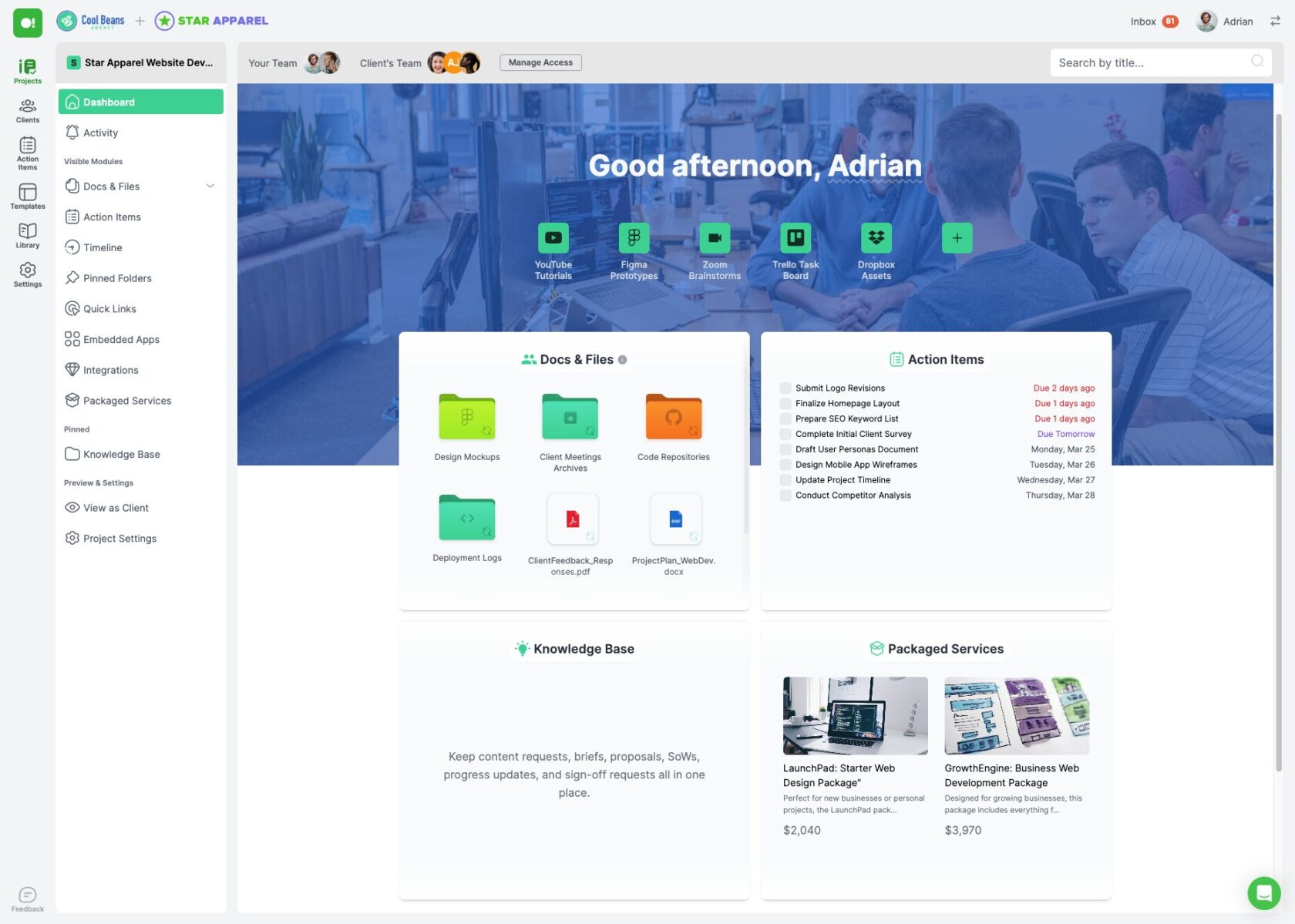
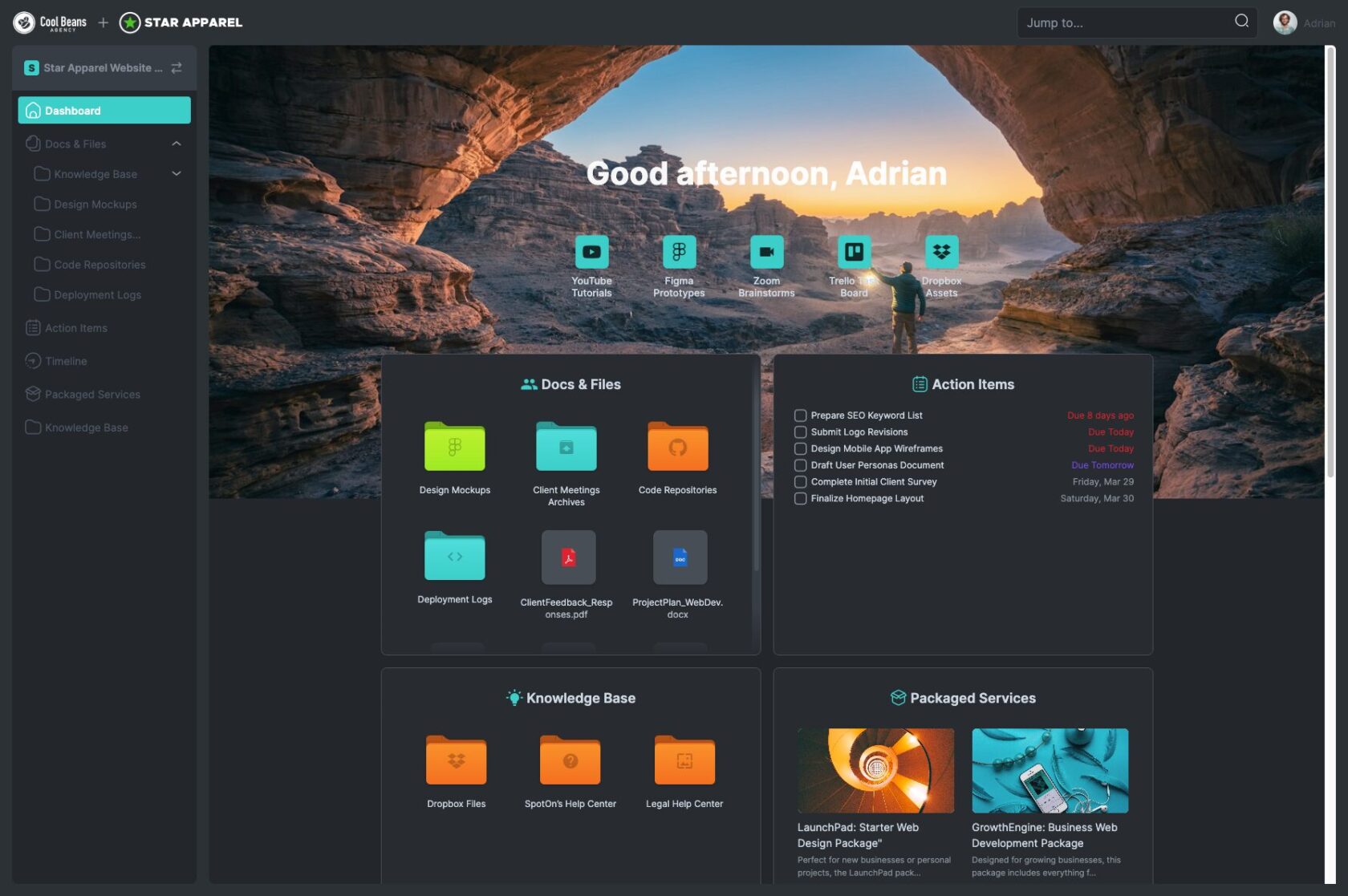
2. Understand Your Clients’ Needs
To offer exceptional client service, you must first understand what your clients need and expect. This involves actively listening to their concerns, asking the right questions, and empathizing with their situations. Conduct regular surveys, feedback sessions, and one-on-one meetings to gain insights into their experiences and preferences.
Understanding your clients allows you to tailor your services to meet their specific needs, leading to higher satisfaction and loyalty. It also helps you anticipate future needs and trends, enabling you to stay ahead of the competition.
For instance, if you know a client values speed, you can prioritize efficiency in your interactions with them. If another client values detailed explanations, you can ensure your team provides thorough information in all communications. This level of personalization can make a significant difference in client satisfaction.
3. Train Your Team Effectively

Your team is the front line of your client service. Providing comprehensive training ensures they have the skills and knowledge to handle various client interactions professionally and effectively. Focus on:
• Communication Skills: Ensure your team can communicate clearly and empathetically. Effective communication involves not just speaking but also responding appropriately
• Problem-Solving: Equip them with strategies to handle issues swiftly. This includes training on how to stay calm, how to identify the root cause of a problem, and how to come up with solutions
• Product Knowledge: Make sure they are well-versed in your services to answer any questions confidently
Regular training sessions and workshops can keep your team updated on the latest trends and techniques in client service. Role-playing exercises, for instance, can help team members practice handling difficult situations in a safe environment. Guest speakers and industry experts can provide new perspectives and insights that enhance your team’s skills.
4. Personalise Your Service
Personalisation is key to making clients feel valued and appreciated. Use client data to tailor your interactions and services to individual preferences and needs. Address clients by their names, remember important details about their business or past interactions, and customise your offerings to suit their specific requirements.
Personalised service builds stronger client relationships and fosters loyalty. It shows clients that you see them as individuals, not just numbers. For example, sending a personalized birthday message or a thank-you note for a long-term partnership can go a long way in making clients feel special.
Advanced CRM systems can help track client preferences and history, making it easier to provide personalised service. These systems can remind your team of important client dates, preferences, and past interactions, ensuring every client interaction is meaningful and tailored to their needs.
5. Be Proactive
Proactive service involves anticipating client needs and addressing potential issues before they arise. This can be achieved by regularly checking in with clients, monitoring their accounts for signs of problems, and offering solutions or improvements without waiting for them to ask.
Proactive service demonstrates your commitment to client satisfaction and can prevent minor issues from escalating into major problems. It shows clients that you are attentive and dedicated to their success.
For example, if you notice a client frequently asks about a specific feature, consider creating a guide or tutorial for that feature. If a client’s project is nearing a critical deadline, check in to see if they need any additional support. This level of attentiveness can significantly enhance client satisfaction and loyalty.

6. Use Automation
Leveraging technology can improve your client service by improving efficiency and communication. Implement tools such as:
• CRM Systems: Track client interactions and manage relationships effectively. A CRM system can help you keep records of client communications, preferences, and history
• Chatbots: Provide instant responses to common queries, offering clients immediate assistance even outside business hours. Chatbots can handle simple tasks like answering FAQs or directing clients to the right resources
• Automated Email Systems: Send timely updates and follow-ups. Automated emails can ensure clients receive important information and reminders without delay
Technology can streamline your processes, making it easier for clients to get the information and support they need quickly.
7. Offer Multiple Communication Channels

Clients have different preferences for communication. Some might prefer email, while others might favor phone calls, live chat, or social media. Providing multiple communication channels ensures that clients can reach you in the way that is most convenient for them.
Ensure all channels are monitored and that responses are prompt and professional. Consistent training on handling communications across different channels can help maintain high standards of service within your team.
Offering multiple communication channels also makes your business more accessible. Clients can choose the method that best suits their needs and circumstances, enhancing their overall experience. For instance, a client on the go might prefer a quick text message, while another working on a detailed project might appreciate a comprehensive email response.
8. Gather and Act on Feedback
Regularly gathering client feedback helps you understand their experiences and identify areas for improvement. Use surveys, feedback forms, and direct conversations to collect insights. More importantly, act on this feedback. Show clients their opinions matter by making the necessary changes and improvements based on their suggestions.
This not only enhances your service but also builds trust and loyalty. When clients see their feedback leading to tangible improvements, they feel valued and more connected to your business.
Implementing a structured feedback process can ensure you capture and act on valuable client insights consistently. Use tools like Net Promoter Score surveys to gauge overall satisfaction and identify specific areas needing attention. Follow up with clients to inform them of the changes you’ve made based on their feedback.
9. Resolve Issues Swiftly and Effectively
When issues arise, handling them quickly is crucial. Have a clear process in place for managing complaints and resolving problems. Ensure your team is empowered to make decisions and take actions to address client concerns promptly.
Effective issue resolution can turn a potentially negative experience into a positive one, demonstrating your commitment to client satisfaction. It also helps prevent minor issues from escalating into major problems.
Train your team in conflict resolution and equip them with the tools they need to address issues efficiently. This includes having clear escalation paths for more complex problems and ensuring that clients are kept informed throughout the resolution process. Following up after an issue has been resolved can further enhance client satisfaction and trust.
10. Measure and Improve
To continuously offer the best client service, regularly measure your performance and seek ways to improve. Use key performance indicators (KPIs) such as client satisfaction scores, response times, and resolution rates to assess your service quality. Regularly review these metrics and implement strategies for improvement.
Continuous improvement ensures that your client service evolves to meet changing client expectations and industry standards. It also helps you stay competitive and relevant in a constantly evolving market.
Establish a culture of continuous improvement within your team. Encourage team members to share their ideas for enhancing client service and recognize those who contribute to positive changes. Regularly review your processes and performance metrics, and be willing to adapt and innovate to meet the needs of your clients better.

Conclusion
By implementing these ten strategies, you can enhance client satisfaction, build stronger relationships, and set your business apart from the competition.
Remember, exceptional client service is not a one-time effort but an ongoing commitment to excellence. Continuously seeking feedback, measuring your performance, and being proactive in your approach will help you stay ahead and provide the best possible experience for your clients.
Frequently Asked Questions
What is a client portal?
A client portal, like SuperOkay is an online platform where clients can access information, communicate with your team, and manage their accounts in a secure environment. It centralizes all client interactions and provides 24/7 access to important documents and project updates.
Why is understanding client needs important?
Understanding client needs allows you to tailor your services to meet their specific requirements, leading to higher satisfaction and loyalty. It helps you provide personalized service and address any concerns effectively.
How can I train my team for better client service?
Provide comprehensive training on communication skills, problem-solving, and product knowledge. Regular workshops and training sessions can keep your team updated on the latest client service techniques and trends.
What are some examples of technology that can improve client service?
CRM systems, chatbots, and automated email systems are examples of technology that can enhance client service. These tools streamline processes, improve communication, and provide clients with quick and efficient support.
Why is it important to offer multiple communication channels?
Clients have different preferences for communication. Offering multiple channels ensures that clients can reach you in the way that is most convenient for them, improving their overall experience and satisfaction.
How can I gather and act on client feedback?
Use surveys, feedback forms, and direct conversations to collect client feedback. Act on this feedback by making necessary changes and improvements based on their suggestions, showing clients that their opinions matter.
How can I measure my client service performance?
Use key performance indicators (KPIs) such as client satisfaction scores, response times, and resolution rates to assess your service quality. Regularly review these metrics and implement strategies for improvement.
What does it mean to be proactive in client service?
Being proactive means anticipating client needs and addressing potential issues before they arise. Regularly checking in with clients, monitoring their accounts, and offering solutions or improvements are examples of proactive service.
How can personalization improve client service?
Personalization makes clients feel valued and appreciated. Tailoring interactions and services to individual preferences and needs builds stronger client relationships.
Are you already using a Client Portal? SuperOkay gives you 1 client portal free forever to start creating professional-looking Client Portals, custom branded to your clients’ brands – Start today by clicking here!

How To Become a Freelance Graphic Designer Without a Degree
As the demand for freelance graphic designers continues to grow, aspiring individuals are discovering new opportunities to establish successful careers in the field, e…

How To Start a Social Media Marketing Company
The emergence of social media platforms has revolutionized interpersonal communication, information consumption, and interaction patterns. Consequently, businesses hav…

How to Write a Proposal (2023)
It can be challenging to know how to write a proposal that resonates with clients and is competitive in today’s market. To help you develop this skill, here are 8 tips…

Stop Making These Mistakes If You Are a Non-Technical Tech Founder
It seems like nowadays, whether you are a programmer, doctor or economist, you can and most probably will start your own tech company. It may sound surprising that non…